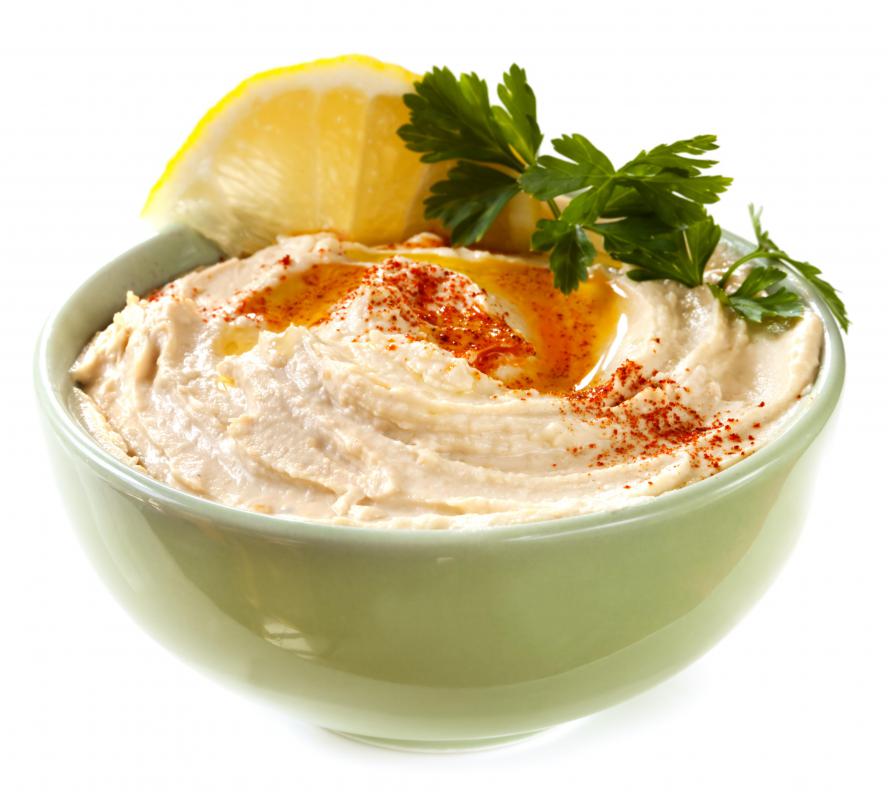At WiseGEEK, we're committed to delivering accurate, trustworthy information. Our expert-authored content is rigorously fact-checked and sourced from credible authorities. Discover how we uphold the highest standards in providing you with reliable knowledge.
What are Some Examples of Jewish Cuisine?
Much like the Jewish people, Jewish cuisine is incredibly varied, and it is hard to single out a specific culinary tradition as particularly “Jewish.” Different Jewish groups such as the Ashkenazi and Sephardic people cook very different foods, incorporating locally available ingredients and regional traditions. All Jewish cuisine shares the common trait of being kosher, meaning that it is made in accordance with Jewish dietary laws, but it can include everything from Apfelstrudel to Vorschmack.
In accordance with Jewish dietary law, Jewish cuisine does not include pork or shellfish. Dairy and meat are also traditionally prepared and served separately. Many dishes in Jewish cuisine also have religious symbolism, especially breads and cakes. Challah, for example, is braided together to represent manna, or plaited like a ladder leading to heaven. Bread may also be baked into shapes like doves and keys to represent various symbolic events in Jewish history, and sweet desserts are also considered symbolically important, as they imply wishes for good fortune.

In many regions, Jewish cuisine is very similar to Mediterranean cuisine. Sephardic Jews, for example, prepare a lot of dishes with olives, whole grains, and fresh vegetables, as do Israeli Jews. Falafel, hummus, couscous, and lots of fish are common in Mediterranean Jewish cuisine. Ashkenazi Jews from Eastern Europe tend to prepare more heavy soups and stews, with dishes like blintzes, borscht, goulash, and kugel being common. Jewish cuisine also has a long history of pickling and smoking, so it is common to find lox and other preserved foods on the plate at Jewish meals.

During certain times of the year, observers of the Jewish faith may eat remarkably similar meals, no matter where they are. For example, during Hanukkah it is traditional to eat foods fried in oil, commemorating the miracle of the Hanukkah lights. The Passover meal is also very traditional, including things like bitter herbs, salt, unleavened bread, and charoset to symbolize various aspects of the Passover story. At Rosh Hashanah, the Jewish New Year, people eat lots of sweet foods, pomegranates, and fish for fortune in the New Year.

Bread and wine are particularly important in the Jewish tradition, which is why these foods are blessed before the Sabbath meal. By tradition, the bread is covered during the Sabbath blessings, and uncovered for its own blessing. Many of the foods and traditions associated with Jewish cuisine have a long and interesting history, and guests at a Jewish meal are encouraged to ask questions to learn more about Jewish history.
AS FEATURED ON:
AS FEATURED ON:
















Discussion Comments
Real Jewish cuisine, at least Ashkenazi cuisine, is _tasty_ but it is tasty for a reason -- and that's because it is unhealthy! Ever hear of schmaltz? Enjoy the cuisine, but enjoy it sparingly! Your heart will thank you for it! :)
Post your comments